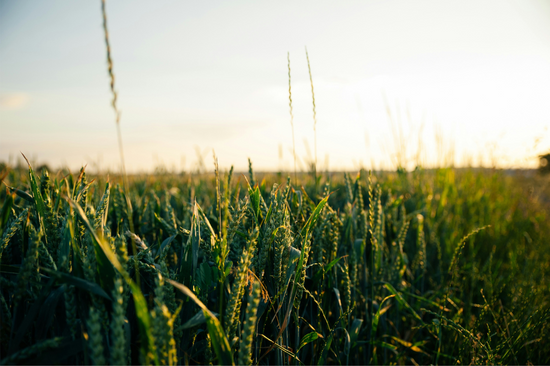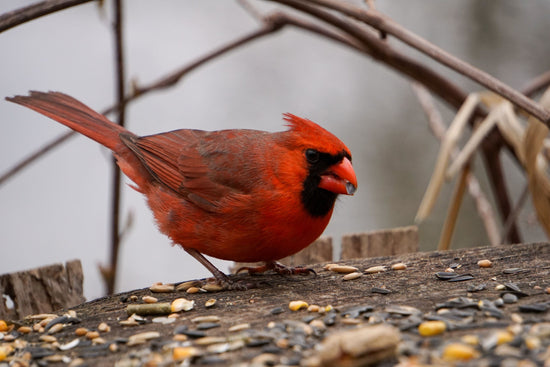Fertilizers offer essential nutrients for plant life. They make up for all the missing elements in the soil, allowing your plants to flourish from root to buds despite all odds. But with so many different blends on the market, finding the ideal kind for your plants can be a challenge. Read on to learn everything you need to know about how to choose a fertilizer.
How to Read NPK Ratio
Fertilizer labels often come with three numbers, which represent nitrogen (N), phosphorus (P), and potassium (K) values—written in this exact sequence. These three core nutrients are essential for promoting overall plant health.
In particular, nitrogen is a key component in chlorophyll, a compound that helps produce the vivid green color in plants. On the other hand, phosphorus is an overall superfood for plants, giving them the energy to function while aiding root, flower, and leaf growth. And finally, potassium helps increase plants’ metabolism by giving them resistance to diseases and drought.
It’s important to know that the NPK ratio is based on their respective percentage component based on fertilizer weight. So a 50-pound bag of 12-12-12 fertilizer would have 12% nitrogen (six pounds), 12% phosphorus (6 pounds), and 12% potassium (6 pounds).
This means the bag contains 36% of these core nutrients. The rest is typically filled with inert material or secondary nutrients, preventing clumping and allowing for an even fertilizer distribution. It also prevents chemical burns, which can dry up your soil.
How to Choose The Right Fertilizer?
Not all front and backyards will react the same way to one kind of fertilizer. It’s important to know that each bag contains a different blend—which means that they don’t remedy the same problems.
It’s also good to know that the soil in your yard may not react the same way as your neighbor’s to fertilizer, even if you have the same soil type. We have covered this extensively in our blog about the basics of fertilization.
The best way to find out the best fertilizer for your soil is to conduct a soil test. You can start by contacting your local cooperative extension office or an independent specialist to help you scientifically break down your yard or garden's soil. They can determine essential elements in its composition, such as the pH level, any diseases it may have, and overall health.
What to Consider When Choosing A Fertilizer
Find one that can cater to your soil's pH level.
For instance, if your lawn and garden soil isn't acidic enough to grow your favorite plants, consider using an acidic blend to fill in the nutrient gaps.
Choose a nutrient blend based on your needs.
If your lawn is suffering from brown grass, a higher nitrogen content may help the green color flourish. But if your soil needs drought protection, then focusing on amping up the potassium content may be better.
Some plants prefer slow-release fertilizers or organic options, which distribute nutrients over time instead of a one-time drop.
Fertilizer Buying Guide
After evaluating your soil’s structure, you may still end up with a multitude of viable fertilizer options. From liquid fertilizers to granular fertilizers and organic fertilizers, here’s a lineup of some of the best options and why they may be perfect (or not!) for you.
16-16-16 Fertilizer
The 16-16-16 fertilizer is a balanced blend of nitrogen, phosphorus, and potassium, offering a high but not overbearing level of nutrients. It often comes in both instant and slow-release formulas, giving you the option to treat your crops based on their needs. This blend is ideal for fruit, vegetable, and floral gardens—but should be used sparingly for lawns. 
Features & Benefits
- 16% nitrogen, 16% phosphorus, and 16% potassium content
- A great all-around fertilizer with plenty of use cases, but shines in specific situations
Pros
- The balanced NPK ratio is great for most turfs and gardens
- Comes in various formulas, from fast-acting to slow-release and from liquid to granular forms
- Can be used for lawns to replenish nutrients in the spring
Cons
- Can’t be used for lawns after seeding, as they often require a less balanced fertilizer after this stage
- Not ideal for plants that don’t require all three NPK nutrients
Best for
- Gardens
19-19-19 Fertilizer
The 19-19-19 fertilizer features a high concentration of nitrogen, phosphorus, and potassium. It’s great for nutrient-deficient soil due to the high ratio of NPK, which isn’t commonly found in regular blends. It’s a useful additive for fruit, vegetable, and floral gardens but doesn’t shine as a starter fertilizer.
Features & Benefits
- 19% nitrogen, 19% phosphorus, and 19% potassium content
- Great for giving existing gardens a quick surge of fast-acting nutrients
Pros
- A high concentration of NPK is ideal for boosting plant growth
- Offers a balanced level of nutrition
- Acts fast and is easy to activate with water after spreading
Cons
- Not ideal for lawns, which often require a specialized ratio of NPK
- It’s too strong as a starter fertilizer, which needs a smaller amount of nutrients
- Usually synthetic fertilizers
Best for
- Gardens
46-0-0 Fertilizer (Urea)
The 46-0-0 fertilizer, also known as the compound urea, is an extremely concentrated mix of nitrogen and inert material. It’s an organic fertilizer that can help provide a massive boost of nitrogen to crops and lawns that need that extra level of productivity and greenness.
- 46% nitrogen
- Great for crops that have enough phosphorus and potassium but are lacking in nitrogen
- Gives plants a massive boost of nitrogen, allowing them to produce higher yields—and fast
- Can be used in granular or liquid form
- Can be used with urea inhibitors to create a slow-release fertilizer
- A very high concentration of nitrogen poses a risk of chemical burns
- Directly spraying this fertilizer into leaves can destroy them
- Requires careful application
- Nitrogen-deficient plants
- Actively growing crops; spread near the roots and soil as opposed to directly on leaves
- 12% nitrogen, 12% phosphorus, 12% potassium
- A versatile fertilizer that is compatible with most crops and turfs
- The all-purpose formula is a great primary fertilizer for your garden or lawn
- Offers a balanced dose of NPK
- A no-brainer fertilizer that releases a balanced ratio of nutrients
- Not the best choice for soil that’s deficient in a specific element (i.e., soil that’s deficient in phosphorus but has enough nitrogen and potassium)
- It’s a “safe” fertilizer which may be a good general option but is not always the best pick
- All plants, from gardens to lawns and trees
- 3% nitrogen, 14% phosphorus, 42% potassium
- Has niche use cases but can be a powerful add-on to help your garden center shine
- Great for plants that produce their own nitrogen, such as peas, alfalfa, beans, and legumes
- Can help nitrogen-rich but potassium-deficient soil thrive
- Not ideal for lawns, which require more nitrogen to bring out the greenness of grass
- Fruit and vegetable gardens—especially those that raise nitrogen-producing crops
- This nitrogen-rich fertilizer packs in the essential elements for growing grass but doesn’t overdo the chemical additives
- Safe to use for grass-heavy gardens, lawns, yards, and more
- Not difficult to control as the nitrogen content is still at a safe level, so there isn’t a huge risk of chemical burn
- Not very good for vegetable gardens that don’t particularly need a boost of nitrogen
- Grassy fields, such as fairways, lawns, and even sports fields
- Contains a special micronutrient from FoxFarm
- An amazing flower-friendly fertilizer made specifically for flowering and stocky plants
- Great as a standalone fertilizer leading toward the final flowering stages of your plants
- Improves texture and flavor of fruit and vegetable yields
- Doesn’t leave a salty residue after use
- Not ideal for greenery, such as lawns and shrubs
- Not a starter fertilizer as its NPK numbers represent a lack of balance
- Flowers, fruits, and vegetables
- 8% nitrogen, 6% phosphorus, 3% potassium
- Slow-release and organic
- Great for helping your lawn and other greenery grow steadily
- Only need to fertilize once or twice per season
- Not ideal if you need a fast-acting boost of nutrients to repair damage or speed up root growth
- Gardens, lawns, trees, and ornamental plants
- 4% nitrogen, 12% phosphorus, 0% potassium
- Strengthens the cell wall of plants, making them sturdier and more resilient to the elements
- It’s an organic slow-release fertilizer, so you only have to fertilize a few times per season
- High in unique nutrients, such as calcium, that some plants crave
- Water-insoluble
- Only for acidic soil (pH level of 7 or lower)
- Not ideal for plants that require an instant boost of nutrients
- May attract animals due to the smell of animal bone
- Bulbs and gardens
- 3% nitrogen, 10% phosphorus, 3% potassium
- Lightweight blend that doesn’t overdo the nutrients, making it great for soil that isn’t nutrient-deficient
- Liquid fertilizer that’s easy to use and spread while preparing your garden for the new season
- Ideal for flowering plants due to the focus on increasing phosphorus
- Not ideal for lawns and turfs
- Flowers, fruits, and vegetables
- Hydro A is calcium-rich, which aids in plant protection
- Hydro B is magnesium-rich, which aids in supplementing plant growth
- This plant food is a liquid fertilizer
- Great to use during the irrigation process
- Combines both Hydro A and B, so there isn’t a need to measure them out separately
- Nutrients are absorbed rapidly
- Not ideal for non-hydroponic plants
- Hydroponic plants
Features & Benefits
Pros
Cons
Best for
12-12-12 Fertilizer
This balanced blend of NPK is unlike its higher-dose alternatives. 12-12-12 fertilizers make great starter feeds for your soil. It can stimulate the soil and roots of plants, speeding up growth while releasing all the essential nutrients.
Features & Benefits
Pros
Cons
Best for
3-14-42 Fertilizer
This low-nitrogen mix is a great option for your fruit or vegetable garden, helping it thrive without overdoing its N composition. It thrives as plant food for crops already seeded or in bloom but isn’t the best option as a starter as you may need more nitrogen during that stage.
Features & Benefits
Pros
Cons
Best for
The Andersons AMS 20-0-0 Fertilizer
This nitrogen-powered mix is your best friend for bringing out the greenest turf on the block. It works as both a starter for growing new grass or reviving patchy lawns, shrubs, meadows, and more.
Features & Benefits
Pros
Cons
Best for
FoxFarm’s Cha-Ching (9-50-10)
This high-phosphorus blend is your best friend if you’re raising flower beds in both soil and hydroponic systems. It was made to strengthen the aroma of flowers and improve the taste of fruit and vegetable harvests.
Features & Benefits
Pros
Cons
Best for
Rainbow Mix PRO™ Grow
The Rainbow Mix PRO Grow is one of the best granular fertilizers that focuses on speeding up the growth of plants and trees. It’s an organic and slow-release option that naturally helps your lawn flourish.
Features & Benefits
Pros
Cons
Best for
Espoma Organic Traditions Bone Meal
Bone meal fertilizers are made from animal bones, which are steamed before they’re ground up to granules and turned into plant foods. These are organic sources of nitrogen and phosphorus but completely lack potassium.
Features & Benefits
Pros
Cons
Best for
Garden Rich Plant Starter 3-10-3 Fertilizer
This starter blend promotes root growth while helping transplanted crops feel at home in their new environment. In addition, it’s a great fertilizer to jumpstart your garden’s early development before packing in other essential nutrients later in the season.
Features & Benefits
Pros
Cons
Best for
House & Garden Aqua Flakes A&B Nutrient
This unique fertilizer is a superfood for hydroponic plants, allowing them to thrive even in the most sensitive environments. Unlike the typical NPK component found in traditional fertilizers, the A and B nutrients offer a different blend of micronutrients. When put together, they make the dream team for planting tomatoes, orchids, lilies, and more.
Features & Benefits
Pros
Cons
Best for
Where To Buy Fertilizer Online?
If you’re still confused about how to choose a fertilizer after going through this lineup of options, consider contacting us over at Standish Milling. We’ll help you choose a fertilizer mix based on your soil testing results, type of crops, location, and more.








